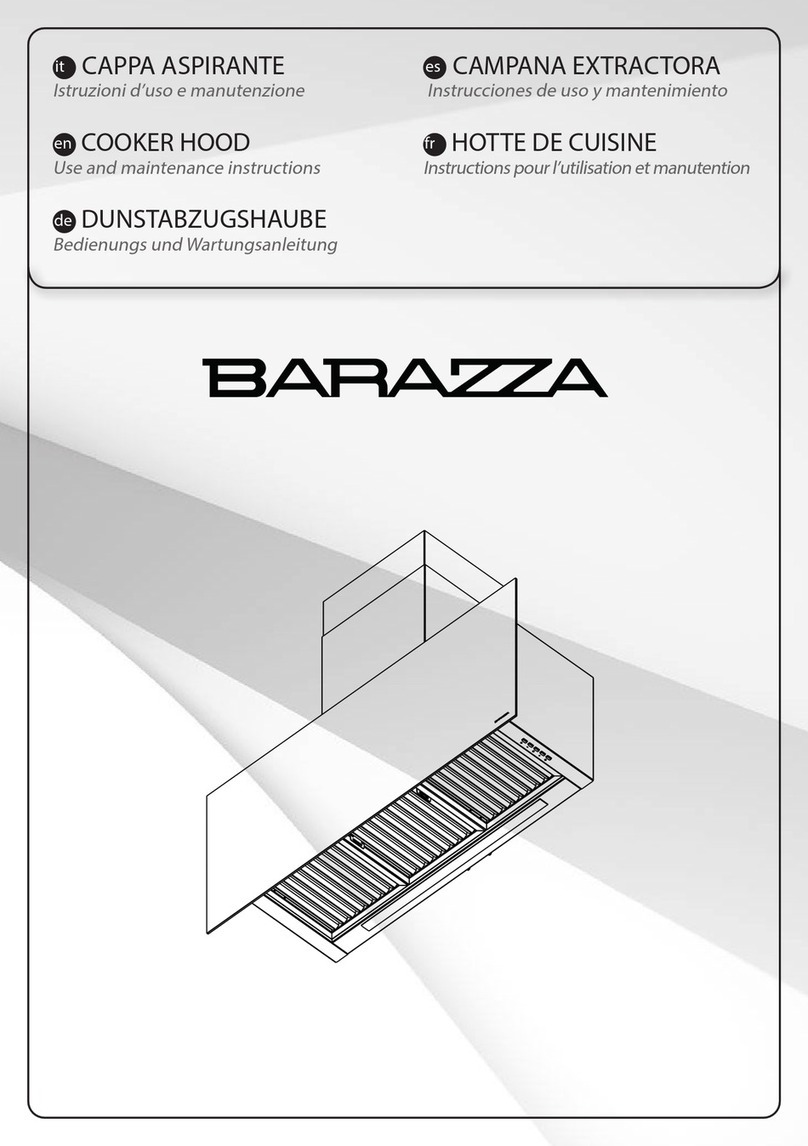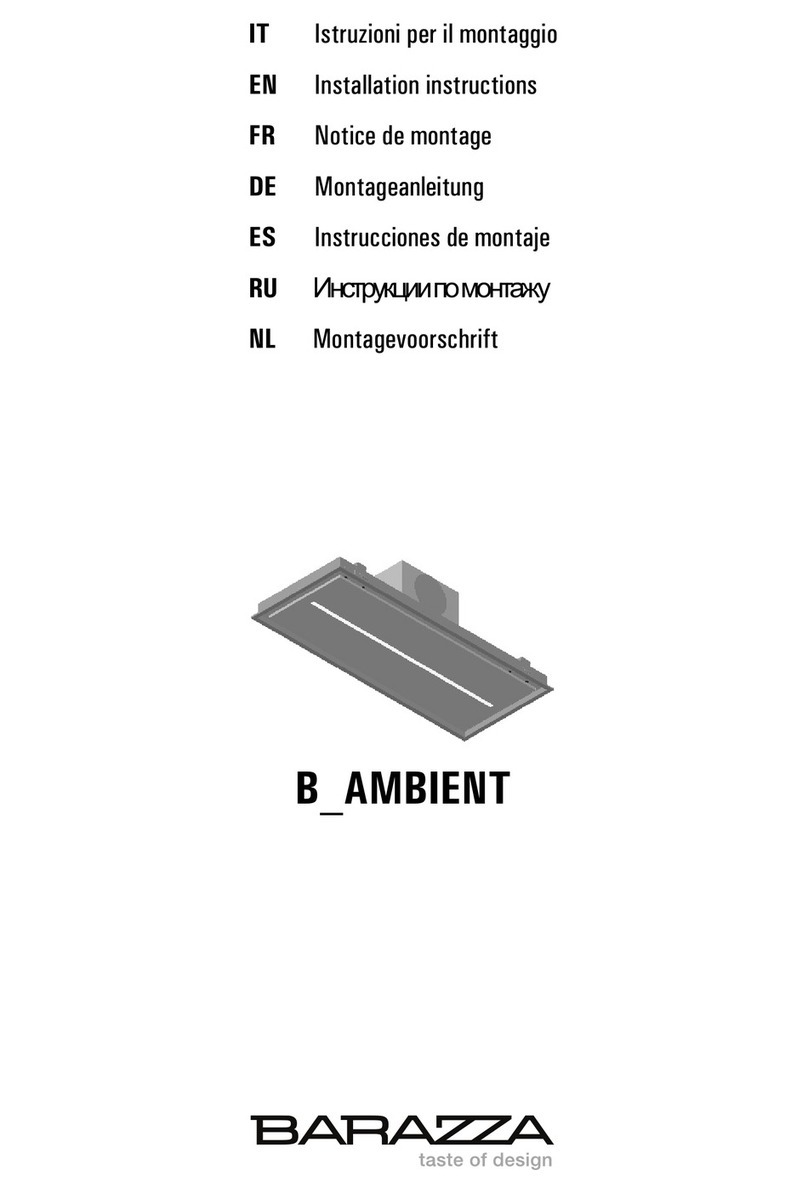ATTENZIONE! La cappa aspirante è equipaggiata con materiale di
fissaggio standard. Chi esegue l'installazione deve assicurarsi di utilizzare
dispositivi di fissaggio idonei alle pareti e/o soffitti trovati. La ditta
costruttrice declina ogni responsabilità per danni causati da montaggi
non eseguiti correttamente.
WARNING! The hood is equipped with standard fixing material. The
person who is mounting the hood should make sure that the fixing
elements are right and suitable for the walls and ceilings he finds. The
manufacturer declines any responsibility for damages caused by
incorrect mounting.
ATTENTION! La hotte est equipée avec des materiaux standard pour le
montage. Le monteur doit verifier que les elements de fixages sont
appropriés aux parois et aux plafonds trouvés. La maison constructice
decline toute responsabilité pour des endommegements causés par de
montages qui n' on pas été faits de manière correcte.
ACHTUNG! Die Dunstabzugshaube ist mit Standard
Befestigungselementen ausgestattet. Der Monteur muss sicherstellen,
daß die vorhandene Befestigungselementen für die gefundenen Decken
oder Wände geeignet sind. Die Herstellungsfirma lehnt jegliche Haftung
ab, für Schaden die von falscher Montage
verursacht worden sind.

























